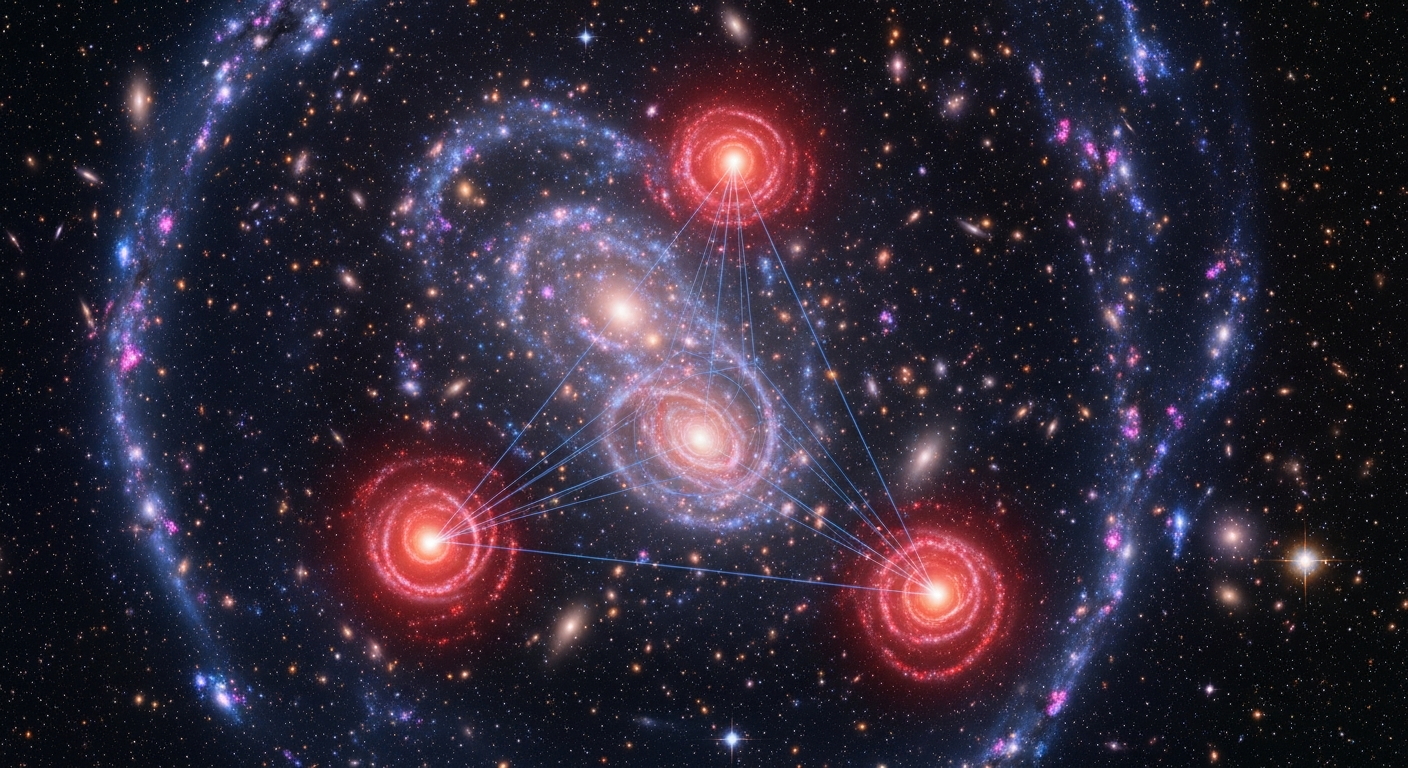Study of the Connected Four-Point Correlation Function of Galaxies from DESI Data Release 1 Luminous Red Galaxy Sample

In a new study, 2508.09070, lead author J. Hou and collaborators present one of the first measurements of the connected four-point correlation function (4PCF) using data from the Dark Energy Spectroscopic Instrument (DESI) Data Release 1. This work probes the subtle non-Gaussianities in the cosmic web, opening a new window into the physics of gravitational evolution and the initial conditions of the Universe.
Beyond Two-Point Statistics
While the standard two-point correlation function and its Fourier counterpart, the power spectrum, are mainstays of cosmological analysis, they only capture the complete information for a purely Gaussian random field. The large-scale structure of our Universe, however, becomes non-Gaussian over time due to the nonlinear evolution of matter under gravity. To access this rich information, we must turn to higher-order statistics. The 4PCF, which measures the correlation between quartets of galaxies, is a particularly powerful tool. It not only provides tighter constraints on cosmological parameters but also offers a unique probe of fundamental symmetries, such as parity.
Methodology and a High-Significance Detection
The analysis focuses on the gravitationally induced, parity-even component of the 4PCF within DESI’s extensive Luminous Red Galaxy (LRG) sample. A brute-force measurement of the 4PCF is computationally prohibitive, scaling with the number of galaxies to the fourth power. To overcome this, the team employed an efficient estimator that expands the 4PCF in a basis of isotropic functions (2010.14418), a technique that reduces the computational complexity to manageable pairwise operations. This builds upon a rich history of developing efficient estimators for higher-order statistics, such as the 3PCF (10.1093/mnras/stv2119).
The key findings of this work include:
- A 14.7σ Detection: The study reports a highly significant detection of the connected parity-even 4PCF signal, showcasing the statistical power of the DESI DR1 dataset.
- Consistency with ΛCDM: The measured amplitude of the density fluctuations inferred from the 4PCF is in excellent agreement with predictions from simulations based on the standard Planck ΛCDM cosmology.
- Robust Systematics Handling: A significant portion of the work is dedicated to validating the detection and addressing observational systematics. The DESI DR1 LRG sample has relatively low completeness, making the analysis sensitive to the implementation of the instrument’s fiber assignment algorithm. The authors meticulously tested different schemes, quantified their impact on the covariance matrix, and developed a robust diagnostic framework involving auto- and cross-correlation analyses across different sky patches.
A Foundation for New Physics Searches
This measurement surpasses previous analyses with the BOSS survey (2108.01670) and demonstrates the remarkable capabilities of the DESI dataset. Crucially, the robust methodology established here provides an essential foundation for future, more exotic scientific searches. The diagnostic framework developed to validate the standard parity-even signal is indispensable for confidently interpreting any potential detection of a parity-odd 4PCF—a signal that is predicted to be zero in the standard model and whose discovery would point to new, parity-violating physics in the early Universe.

Content generated by gemini-2.5-pro using this prompt.
Image generated by imagen-4.0-generate-001 using this prompt.